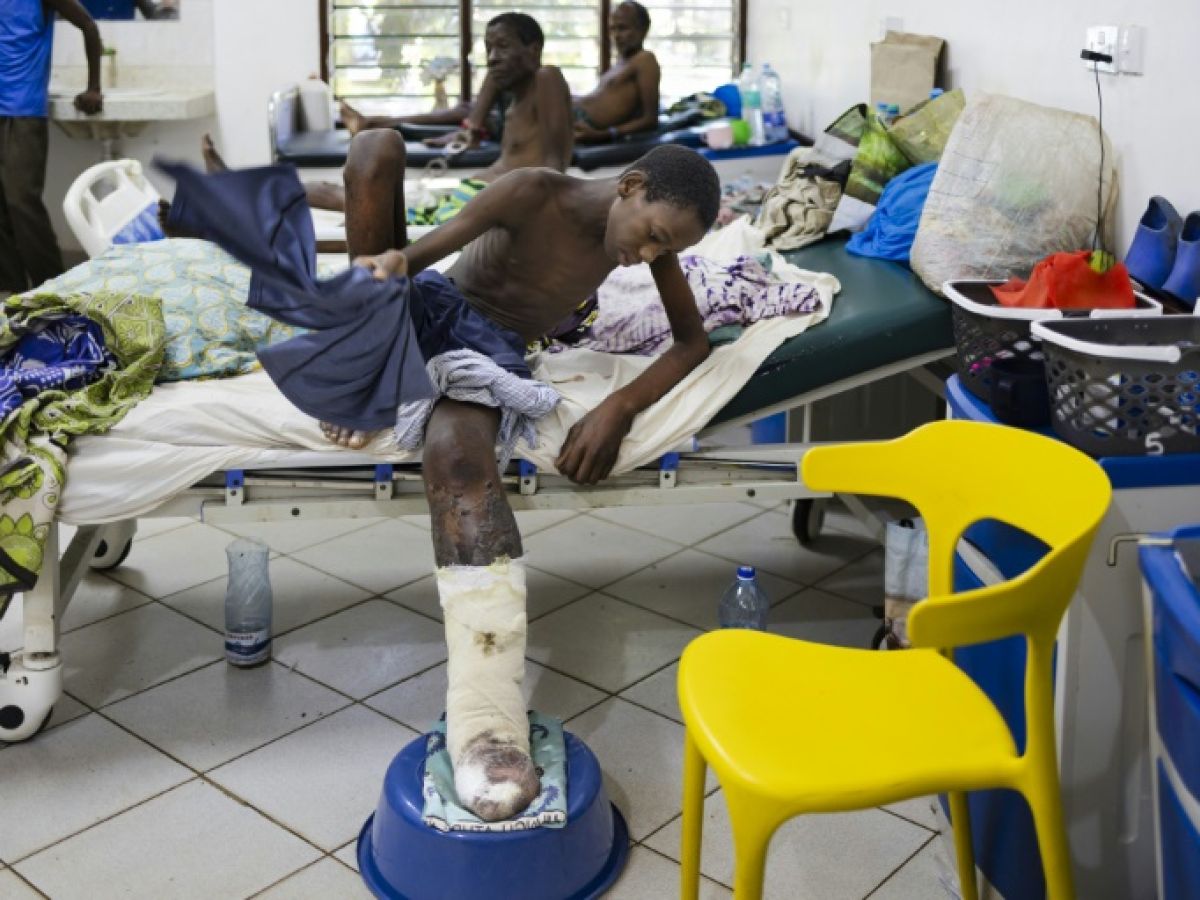Writhing in pain on a hospital bed in a Kenyan coastal town, 14-year-old Shukurani Konde Tuva prepares for the amputation of her left foot, which could not be saved by antivenom after a snakebite.
A puff adder – the most common and one of the most venomous snakes in sub-Saharan Africa – attacked him more than a month ago while he was eating outdoors in his village near the town of Malindi.
His family rushed him to hospital two hours away by motorbike, but the antivenom administered failed to prevent or reverse the envenoming.
"My son's leg is completely rotten and there are even maggots coming out of it. It will have to be cut off," his distraught mother Mariamu Kenga Kalume told AFP.
According to data from the World Health Organization (WHO), approximately 5.4 million people are bitten by snakes each year worldwide, and nearly half are poisoned by their venom.

Up to 138,000 people die and 400,000 suffer permanent physical after-effects.
These alarming figures are, however, only a "serious underestimation" of the reality according to the UN organization, which estimates that 70% of cases are not reported.
Some beliefs and superstitions distort the data, with many snakebite victims preferring to turn to traditional remedies or attributing bites to voodoo "sent by their enemies" instead of seeking medical help.
– “Snake Stone” –

A few kilometers from the hospital where Mr. Tuva is being treated, Douglas Rama Bajila shows AFP his traditional medicine solutions for "sucking out" the venom.
A popular remedy is the "snake stone," made from a cow bone, which sells for about a dollar.
According to the healer, it can be reused for years after its first use: he assures us, it is enough to soak it in milk for a few hours to "recharge" it.

The stone was placed on Mr. Tula's leg as he was being transported to the hospital, but unfortunately fell on the way, his mother said.
This type of remedy is popular because effective treatments are very expensive.
Antivenoms cost up to 8,000 shillings (about 54 euros) per vial, and some patients need up to 20 doses.
– Bad reactions –
Kenya's stockpile of antivenom is estimated at between 10,000 and 30,000 vials, and an additional 70,000 are needed to effectively manage the problem, according to Kenya's KIPRE institute, which conducts biomedical and preclinical research.

Antivenom is made by extracting venom from snake fangs, which is then diluted and injected in small doses into animals such as horses, which produce antibodies that can then be extracted for use in humans.
The serum is also not always effective, as it often comes from other countries such as India, where the snakes are slightly different.
But unsuitable antivenoms can cause "very bad reactions," says specialist Kyle Buster Ray.

Mr. Ray cares for reptiles at the Watamu Snake Farm, which houses more than 400 venomous and non-venomous species, and helps the community by sometimes providing free antivenom to critically ill victims.
But its supplies are limited. The farm also trains vulnerable people in emergency procedures in case of a bite, such as splashing water in the eyes in case of venom splatter.

At a session attended by AFP, about half of the community members said they had been bitten by a snake at least once, and almost all had first resorted to traditional medicine.
Many showed signs of paralysis, and one suffered from partial blindness.
– “Mental trauma” –
In Nairobi, KIPRE is working on a country-specific antivenom applicable to several snake species, which it hopes will be available in about two years.

Valentine Musabyimana, a researcher at the institute, said the goal was to "develop a highly effective antivenom; the patient would only need one vial."
Although the process is long and costly, Ms. Musabyimana is optimistic: "Since it is a government project, the cost will be subsidized within the reach of an ordinary citizen."
It will be too late Shukurani Konde Tuva.
At the snake farm, Mr. Ray warns that the teenager risks similar psychological consequences. "Someone saw his limb completely rot. They dissect and cut it off (…) there is significant mental trauma."

